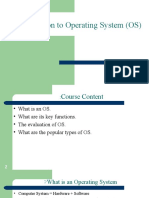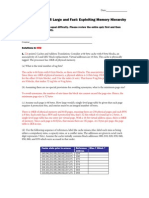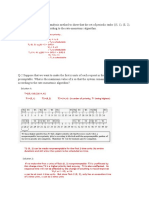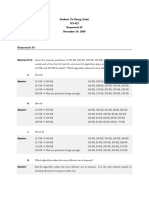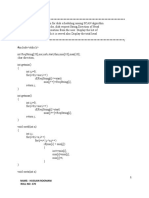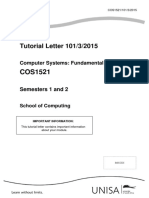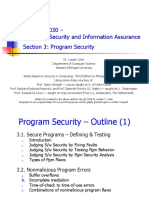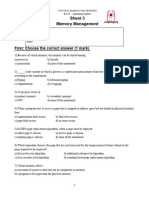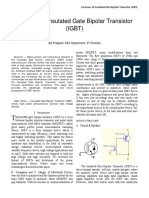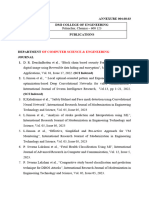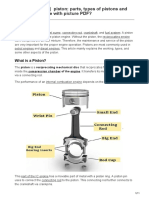0% found this document useful (0 votes)
146 views27 pagesMemory Management
This document provides information about memory management techniques. It discusses topics like segmentation, paging, internal fragmentation, external fragmentation, memory management units, page faults, and page replacement algorithms. Multiple choice questions are provided about these topics, ranging from basic to advanced levels. Effective memory management aims to maximize available memory and minimize memory-related faults and delays. Various algorithms like LRU, FIFO and optimal page replacement are evaluated on criteria like page fault rates.
Uploaded by
Abhishek DuttaCopyright
© © All Rights Reserved
We take content rights seriously. If you suspect this is your content, claim it here.
Available Formats
Download as DOC, PDF, TXT or read online on Scribd
0% found this document useful (0 votes)
146 views27 pagesMemory Management
This document provides information about memory management techniques. It discusses topics like segmentation, paging, internal fragmentation, external fragmentation, memory management units, page faults, and page replacement algorithms. Multiple choice questions are provided about these topics, ranging from basic to advanced levels. Effective memory management aims to maximize available memory and minimize memory-related faults and delays. Various algorithms like LRU, FIFO and optimal page replacement are evaluated on criteria like page fault rates.
Uploaded by
Abhishek DuttaCopyright
© © All Rights Reserved
We take content rights seriously. If you suspect this is your content, claim it here.
Available Formats
Download as DOC, PDF, TXT or read online on Scribd
/ 27


